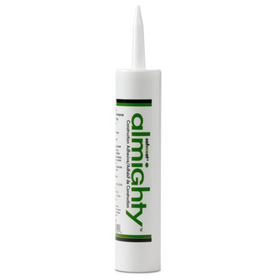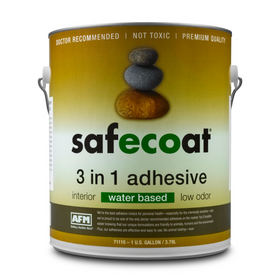
Deck Railings Keep Your Outdoor Space Safe and Beautiful
Last Updated: Mar 10, 2025The deck is your window to the world that is made safer with well-designed deck railings. It is also the spot where your indoor and outdoor spaces collide. If you want to bring the creativity and safety of interior design to this essential outdoor living space, you are in the right place. This deck railing in-depth product guide covers everything from award-winning manufacturers and building code requirements to installation tips and popular products with style.
Table of Contents
- Why Install Deck Railings?
- What Types of Deck Railings Exist?
- How Much Do Deck Railings Cost?
- How Long Do Deck Railings Last?
- How Do You Install Deck Railing?
- What Are the Best Brands of Deck Railings?
- How Do You Maintain Deck Railings?

Why Install Deck Railings?
Safety and code requirements are critical for home renovation and building projects, so here is a closer look at the International Residential Code (IRC) guidelines for deck railings.
- Decks higher than 30 inches above grade must have a deck (guard) rail.
- For decks lower than 30 inches, if homeowners choose to install a deck (guard) railing, it must meet IRC code guidelines.
- Deck (guard) rails must be 36 inches in height or taller (36 inches is the distance from the deck surface to the top point of the deck rail)*
*Check local jurisdiction, state, or provincial requirements carefully as certain areas mandate higher deck (guard) rails (e.g., California properties must use 42-inch rails at a minimum)

What Types of Deck Railings Exist?
Here is a glance at nine categories of deck railings that will add safety and style to your outdoor living space.
- Glass Railing
- Steel Railing
- Redwood Railing
- Cable Railing
- Vinyl Railing
- Composite Railing
- Historic Railing
- Modern Aluminum Railing
- ADA Railing
Glass Railing
Glass rails make sure nothing comes between you and the view. They also add an effortless elegance to any deck. With an interior feel and a wide-open view, the glass railing allows you to keep your focus on your skyline, your view, and your home.
Steel Railing
Although steel is more substantial than aluminum, it has a downside -- rust. Steel has iron in it, and oxygen, iron, and moisture are the elements needed to create rust. Advances in coating techniques can slow this process. Despite these positive advancements, most steel railing manufacturers offer 10 to 15-year warranties, while most aluminum offerings carry 25 years and beyond.

Redwood Railing
Redwood has earned a reputation as a remarkable deck railing material. It is straight, stable, and is naturally resistant to insects and weathering. It can last up to approximately 30 years on a well-maintained deck. Redwood is also the most fire-resistant material on the market. The challenge is the limited supply and environmental concerns, making it less available and one of the most expensive options for deck railings.
Cable Railing
Contemporary cable railings provide a popular look with an industrial, horizontal cable to traditional vertical balusters. The cable rail system is stylish and functional, plus it offers excellent deck views.
Vinyl Railing
Newer to the market, vinyl deck railings offer low maintenance requirements, easy installation, and build on the cost-effective nature of vinyl. All of these benefits along UV-resistant have helped these rails gain popularity. Of course, vinyl has its share of environmental and health-related concerns, which may factor into your decision.
Composite Railing
Composite railings have been around for decades, blending wood fibers and plastic for functionality. Since composite can be a pleasing alternative to natural wood, they continue to gain fans minus the drawbacks. This takeaway means less time spent on the upkeep of your railings and more time enjoying the entire deck.
Historic Railing
Architecturally correct railings for historic properties and spaces have certain companies embracing new processes and materials to meet the renovation demand. What was once old is new again. It also appears innovation is playing a role in the current market. Locating professionals or a recognized group in your region that can create and work closely with you on the historical railings is an excellent investment, but it can take research.
Aluminum Railing
The sleek, simplified look of aluminum railing systems helps deck owners create personalized outdoor living spaces with a modern flair. Additional benefits of the pre-assembled aluminum railing are fully recyclable material, quicker installation time, and maximum strength.

ADA Railing
Mixing durability with customization to create ADA-compliant railings for seniors and small children is necessary for meeting special building codes. These ADA railings, manufactured out of heavy-gauge aluminum, typically include various radius elbows and styles of returns to meet different installation requirements.
How Much Do Deck Railings Cost?
According to HomeAdvisor, installed deck railings cost an average of $93 per linear foot in 2021. They go on to say that materials can range from $15 for inexpensive composite to $600 per linear foot for a product with high-quality glass panels.
To get a price range for the material, take a look at the clever product calculator that TREX has developed. It includes pricing for homeowners in the US and Canada and other helpful links for your project.
How Long Do Deck Railings Last?
Depending on the type of deck railing you select, deck rails can last anywhere from 15 years (e.g., wood) up to 30 years (e.g., composite, aluminum, vinyl, et al.) if you purchase them from a reliable manufacturer or supplier. If the deck railings are maintained and kept in good shape, they can last longer. As a reference point for buyers, brands generally offer guarantees ranging between 10 and 25 years. To protect your product's warranty, consider having a professional install the deck rails unless you are a skilled DIYer.
How Do You Install Deck Railing?
The Construction Company Inc. offers a step-by-step tutorial on installing a popular deck railing for homeowners skilled at renovation projects.
Building Materials
Shop high-performance building materials that are vetted for benefits to your health, your pocketbook, and the planet.

AFM Safecoat Almighty Adhesive Case of 12
AFM Safecoat
In Stock

AFM Safecoat 3 in 1 Adhesive
AFM Safecoat
In Stock

Quickscrews Cabinet Install Screws
Quickscrews
In Stock

AFM Safecoat Metalcoat Primer
AFM Safecoat
In Stock

AutoSlide Automatic Sliding Door System
Autoslide
Out of Stock
2 Colors

Autoslide Smart Tag Pet Door Kit
Autoslide
Out of Stock
2 Colors

AutoSlide Elite iLock Smart Tag Pet Door System
Autoslide
Out of Stock
2 Colors

Quickscrews Pan Head Pocket Hole Screws
Quickscrews
In Stock

Autoslide Elite Smart Tag Pet Door Kit
Autoslide
Out of Stock
2 Colors

Autoslide Motion Activated Pet Door System
Autoslide
Out of Stock
2 Colors
What Are the Best Brands of Deck Railings?
Trex Signature, Deckorators ALX, and Westbury are popular deck railing brands. Additional manufacturers in the deck railings industry market multiple products and work with home centers such as Lowe's and Home Depot to sell numerous lines.

Trex Signature Deck Railing
Trex Signature railing is an award-winning line known for effortless style and exceptional strength. Trex products are on decks across 35 countries, and they are part of the HGTV® Dream Home 2021. From modern to classic, or from round balusters to square ones, you will find many customizable features. Trex railing has all the strength of aluminum, and they are easy to install. Trex offers unique options, such as rod rail, created to look like a cable railing. Mesh rail is another design option with a unique, almost industrial feel that features stainless steel mesh. Trex has also announced a glass rail option for the Signature Aluminum Railing product line.

Deckorators ALX Aluminum Railing
Deckorators Aluminum Railing is an example of how the company leads the industry with new and innovative decking railing products. Specifically, ALX has two product configurations: the AL classic, a traditional shape more often found in wood and composite product lines, while the Proline has a significant 2x4 look. With components constructed from heavy-gauge aluminum and designed to withstand the elements, Deckorators has also returned to the Qualified Remodeler - Top 100 Most Requested Products List in May 2021.
Westbury Railing
Westbury is an American manufacturing and American-made products industry leader in deck railing products. The majority of their best-selling products are white and black, but they do offer several custom color options. They have minimal installation requirements, with balusters smoothly sliding into pre-slotted spaces. Westbury has a deep product line with mid-rails, various price points, and several post sizes to customize your look.
How Do You Maintain Deck Railings?
These steps will help you preserve your deck railing for the future. If you live in a region with cold weather and freezing temperatures, protect your deck railings during the winter months with these three steps.
- Clean your railings, use a basic sponge or cloth, warm water, and a simple detergent. For scuff marks or severe stains, try a natural all-purpose cleaner like AFM Safecoat's Super Clean, or simply use vinegar and water. Remember to rinse thoroughly after washing your railings to prevent build-up.
- Inspect deck railings for damage. This can include chipping, loose boards, et al., Replace loose or broken deck boards before ice or snow have the chance to cause further damage.
- Remove snow and ice from around your deck railings. Use a plastic shovel instead of a traditional metal one. It is critical to shovel in the direction of the wood grain to ensure the shovel doesn't get caught on the side of the deck boards or leave any gouges in the deck.
Kelly Isley
Kelly Isley is a writer, author of four books and ASJA member. She has also been renovating homes for 12+ years, is an engineer, pilot, football fan, and lover of ice cream.



